Two Cham statues which are on display at the Da Nang Museum of Cham Sculpture have been amongst 24 additional Vietnamese artifacts to make them onto the list of national treasures in Viet Nam, following recent approval from Prime Minister Nguyen Xuan Phuc.
Let’s have a loser look at these national treasures through some stunning photos captured by our reporters Xuan Son and Nguyen Le.
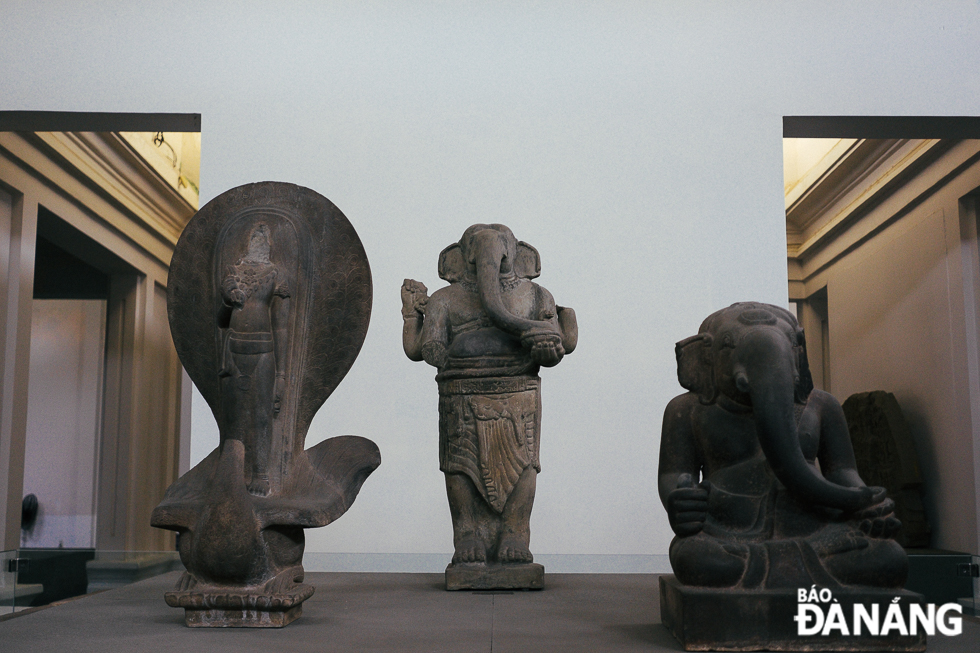 |
| The statute of Ganesha, an elephant-headed Hindu god, (centre) dating back to between the 7th and the 8th centuries, is 48cm in length, 34cm in width and 95cm in height. It was unearthed at the My Son relic site of the neighbouring province of Quang Nam by the Ha Noi-based L’École Française d’Extrême-Orient (EFEO) in 1903, and brought to the.Da Nang Museum of Cham Sculpture 15 years later. |
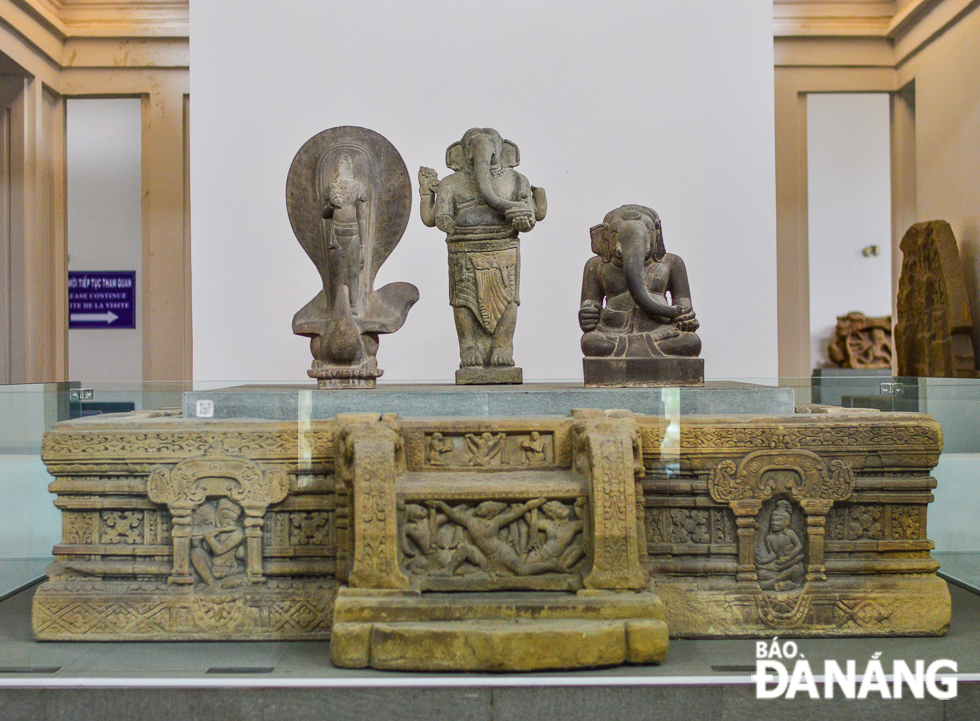 |
| The statute of Ganesha is placed in a solemn position on the sandstone My Son E1 pedestal, which was bestowed national treasure status in 2012. |
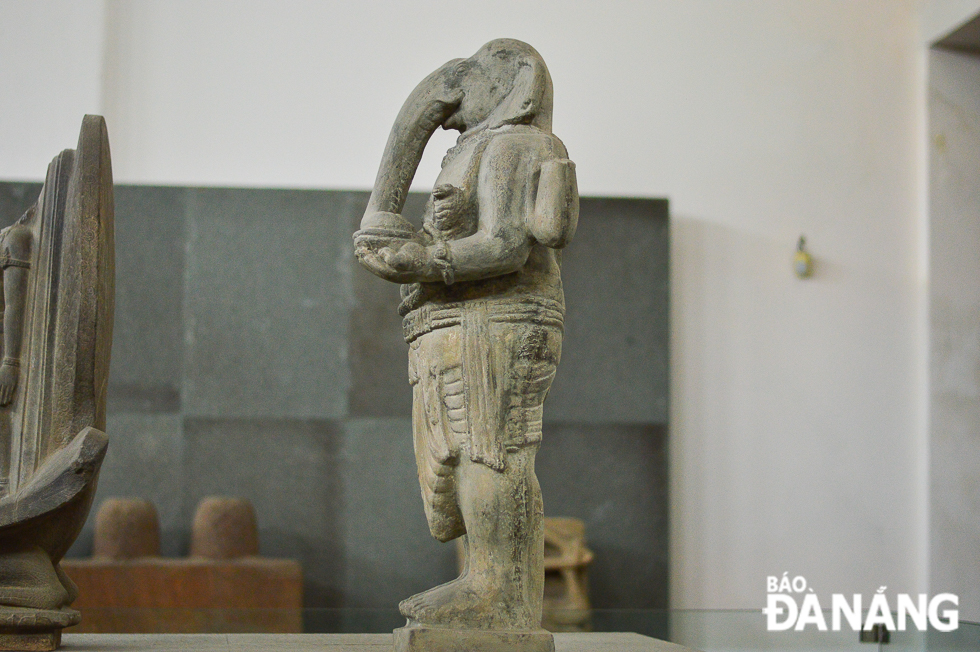 |
| In Indian mythology, Ganesha is regarded as the god of wisdom, knowledge and prosperity. In the Hindu mythology, Ganesha, the son of Lord Shiva and Goddess Parvati is the God of Fortune, Knowledge and Literature. He is among the most ancient deities of Hindu temples, and also the most popular one as his capacity to remove all difficulties and hurdles in life. Lord Ganesha has been worshipped by Hinduism communities till today. |
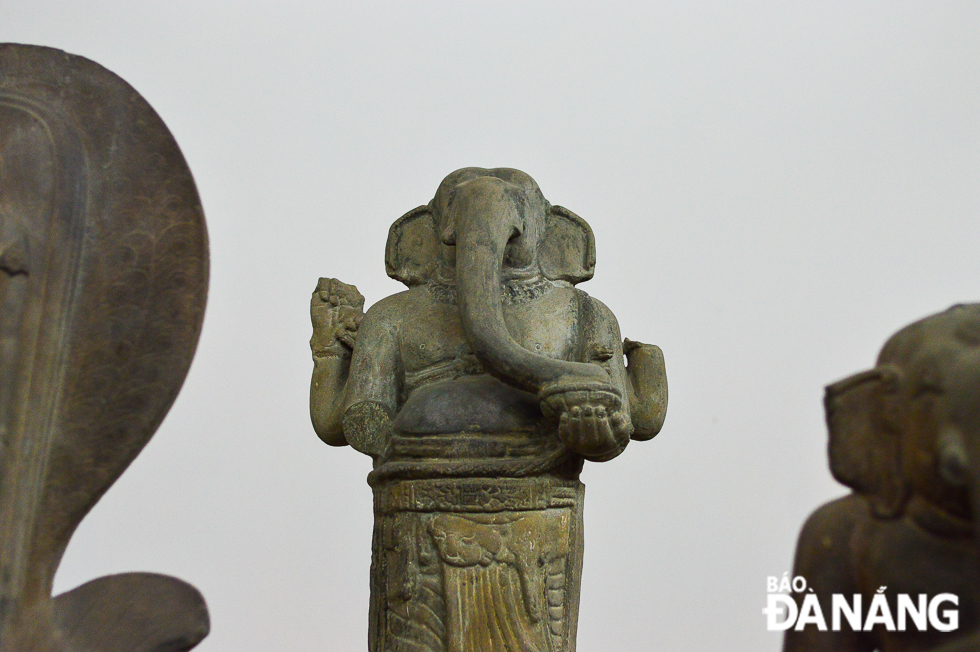 |
| In religious sculpture, Ganesha is depicted with an elephant's head with softly curling trunk.and rotund human body, two or four arms, but occasionally more. The Hindu god is widely worshiped in India, Sri Lanka, Bangladesh, Nepal and many Southeast Asian countries. In Viet Nam, artworks depicting Ganesha can be found in the Champa and Oc Eo cultures. |
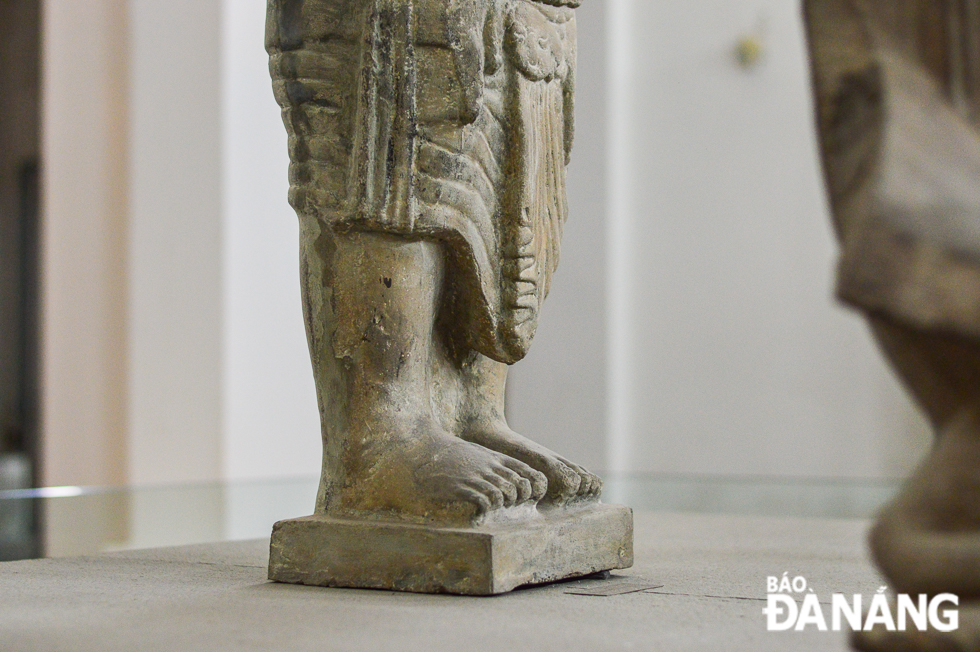 |
| This is one of the rare round statues showing the god Ganesha standing. The statue is still relatively intact and large-sized, and it boasts many unique stylistic features of the early Champa sculpture art dated back to the 7th and 8th centuries. |
 |
| Indian President Ram Nath Kovind and his wife are seen admiring the sandstone Ganesha statue at the Da Nang Museum of Cham Sculpture in November 2018. |
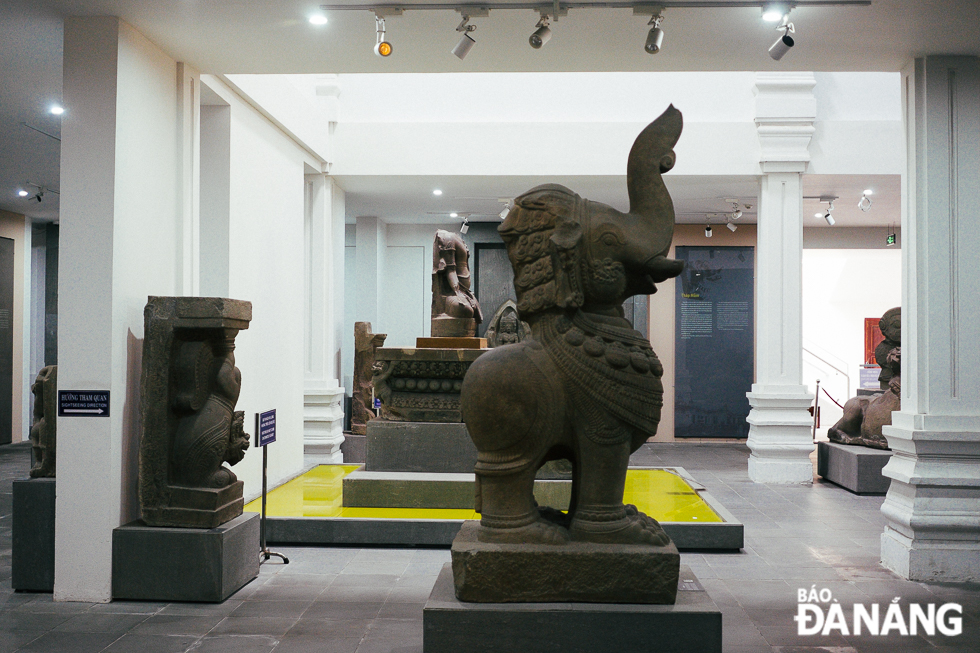 |
| Found during an excavation in Binh Dinh Province in 1933 and 1934 conducted by EFEO, the sandstone sculpture of Gajasimha is 100cm in length, 84cm in width and 215cm in height and it dates back to the 7th century. |
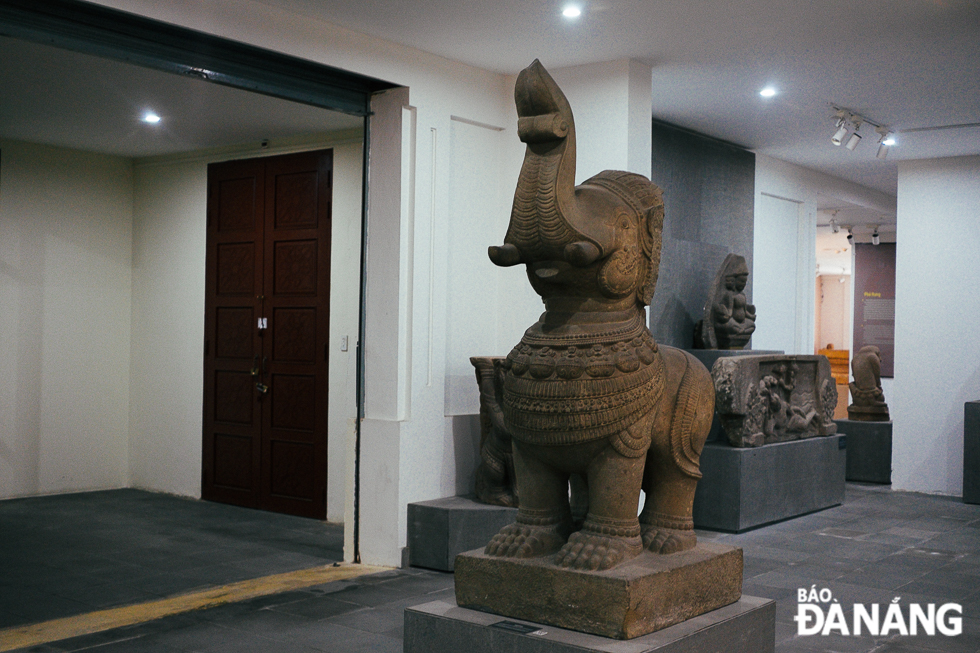 |
| Gajasimha has an elephant’s head and a lion’s body. In Indian mythology, an elephant’s head often symbolised the wisdom and power of a god and the lion body represented the king’s monarchy. Large Gajasimha statues are placed in front of the shrines, acting as gatekeepers. The art piece demonstrates the head of an elephant, the neck wearing a rattle, the chest hair stylised with the stripes often seen on the statues of the Thap Mam period. This sacred animal is a prominent and popular subject for many Champa sculptures during this period. |
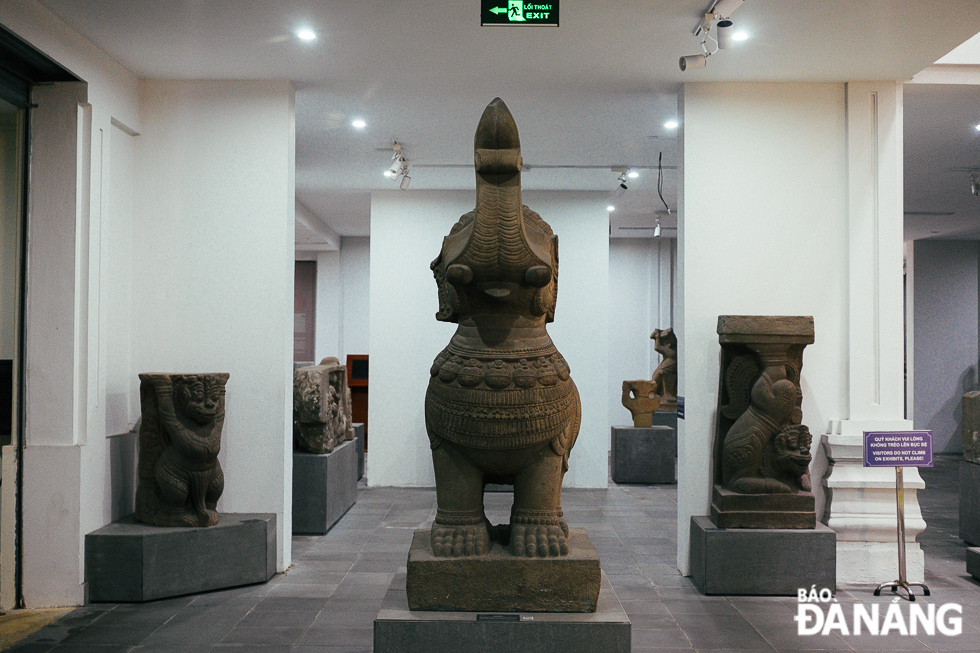 |
| At temple-towers, Gajasimha statues are placed in front of entrances to act as gatekeepers. In the Champa sculpture, Gajasimha statues were made from such diverse materials as sandstone and terracotta. |
 |
| Compared with others, the Gajasimha statue kept in the Da Nang Museum of Cham Sculpture is the largest, showing almost all the features of this mythical hybrid animal in Hindu mythology. |
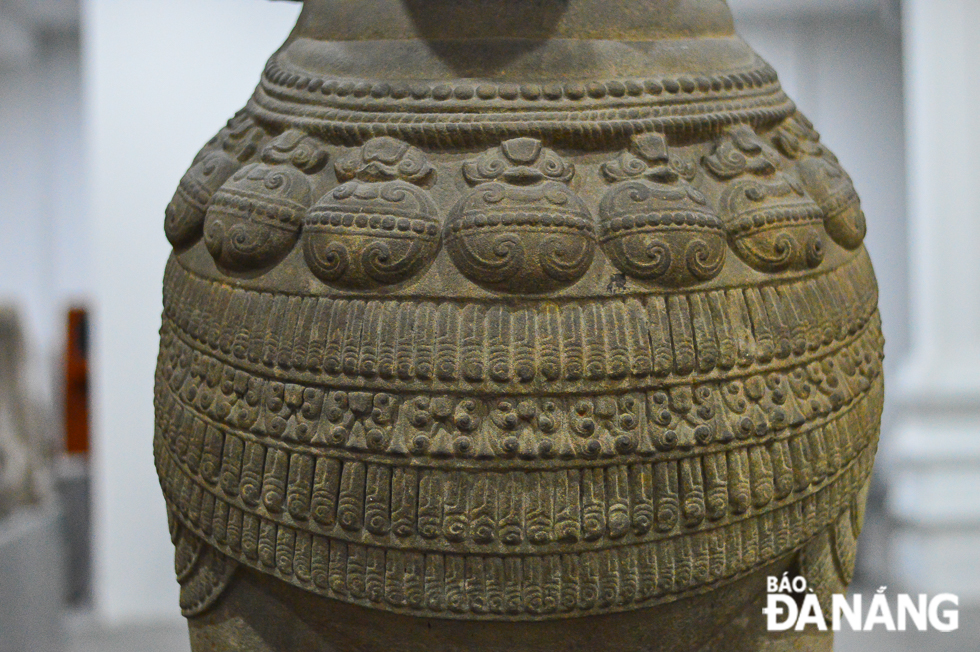 |
| The Gajasimha statue kept in the Da Nang Museum of Cham Sculpture is a testament on the creativity of ancient Champa residents in creating animal sculptures, showcasing the ingenious combination between the images of animals in nature and mascots in mythology and religion. |
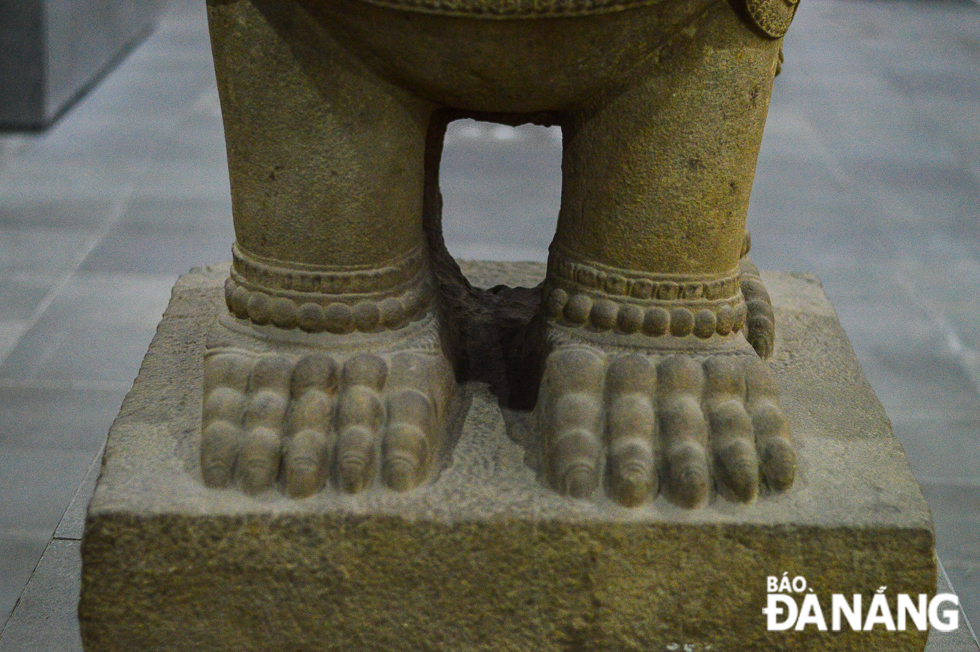 |
| The statue shows off the most prominent artistic features of the Thap Mam style, which is eccentric by the enrichment of the decor and the expression of fantastic animals, deities and dvarapalas. |
The Da Nang Museum of Cham Sculpture now has six objects to be bestowed Viet Nam's national treasure status, namely the Ganesha and Gajasimha statutes, the Tara Bodhisattva Statue, and the Tra Kieu, My Son E1 and Dong Duong pedestals.
Champa was an Indic civilization that flourished along the coasts of what is now central and southern Viet Nam for roughly a one thousand year period between 500 and 1500 AD. The remnants of classical Cham arts extant today are seen mainly in brick temples, sandstone sculptures in the round, and sandstone sculptures in high and low relief. A few bronze sculptures and decorative items made of metal remain as well.
By XUAN SON, NGUYEN LE- Translated by A.T
.














